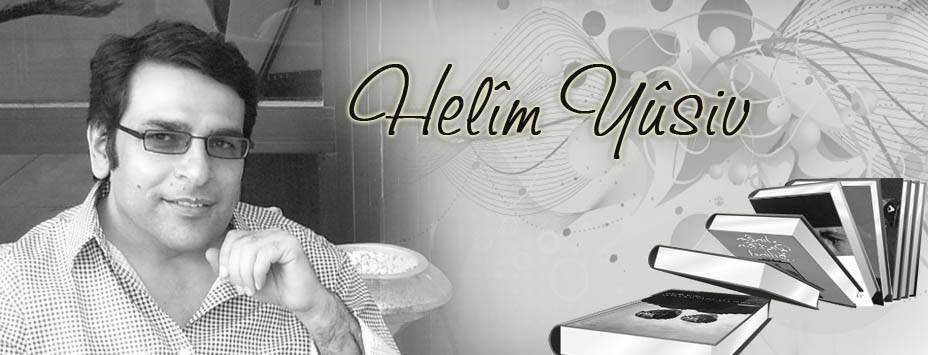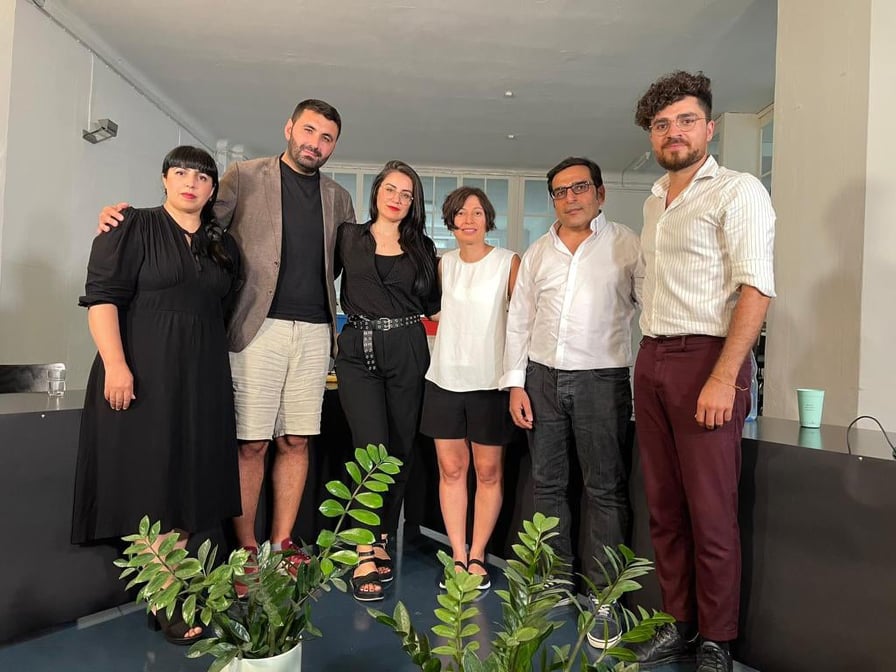
The Four Important Periods in the Development of the Kurdish Novel – By Halim Youssef
Today’s circumstances make it very difficult to assess the situation of the Kurdish novel in all Kurdish dialects and from all parts of Kurdistan. For obvious reasons the novel, like all forms of Kurdish literature, did not have its share of thorough analysis and in-depth research. In my speech I am going to limit myself to those novels we the speakers of Kurmanji are aware of. In my opinion the next few years are going to witness great progress in the written form of this dialect or language. This is due to the late changes, in regard to the Kurdish language in Turkey that resulted in the birth of many printing and publishing institutions on one hand and the concrete foundation laid for written Kurmanji by Celadet Bedirxan, his magazine HAWAR and the generation of Kurdish intellectuals that followed him on the other.
The First Period: The Birth of the Kurdish Novel
The first Kurdish novel in Kurmanji was Şivanê Kurd (The Kurdish Shepherd)by Ereb Şemo. It was written in the Cyrillic alphabet and published in 1930. Following this the following novels by Şemo were published: Jiyana Bextewar (HAPPY LIFE): 1959, DIMDIM: 1966 and HOPO: 1969. All the four novels were reprinted and published in the Latin alphabet in the 1970s and 1980s by the Kurdish publisher Jiyana Nû in Stockholm. DIMDIM which was originally published in Yerevan in 1966 was later published in Russian (Moscow: 1974) and in Sorani Kurdish in the Arabic alphabet (Baghdad: 1975). In these novels Şemo employs the fundamental pillars of the classical novel that is considered to belong to the 19th century. In them one comes across the events and the ideology that belonged to an important period in the history of mankind, the years between the two World Wars: 1917-1945. But in essence the roots of these stories deal with Kurdish struggle and suffering from the historical resistance (DIMDIM) to the role of the Kurds in the Soviet kolkhozes (The Kurdish Shepherd). His works generally lean towards the socialist school of thought that was dominant in his time, especially in the Soviet Union where he lived. This school of thought that started with the October Revolution (1917) deeply influenced the works of socialist writers and left traces in the literature of many nations throughout the world. The fact that the first Kurdish novel was written in the Cyrillic and not in the Latin or Arabic alphabets was directly linked to the situation in Kurdistan where the Kurdish language was harshly suppressed. Some Kurdish writers and intellectuals saw a glimmer of hope in the Socialist Soviet Union and perhaps the publishing of the first Kurdish novel there had something to do with their resistance and hope.
Following the Second World War some events took place in Kurdistan that opened the door to change, not only in regard to politics but also literature. The birth of the Kurdish Republic of Mahabad gave the Kurdish nation great aspirations but their dreams were shattered when the republic was destroyed and its leader hanged. Nevertheless the ideas and principles of the republic were transformed into southern Kurdistan (Iraqi part). There the September Revolution commenced in 1961 and continued till 1975. This uprising that continued for about fourteen years led to various changes throughout Kurdistan with political, social and intellectual impact. During the political upheaval of this period Pêşmerge, a novel by Rehmî Qazî (1) from Iranian Kurdistan and Jana Gel (People’s Agony) by Ibrahim Ahmed (2) from Iraqi Kurdistan were published. Mr Ehmed mentions in his introduction (The Latin Alphabet edition, p.9/ Apec: 1992) that his book was ready in 1956 but due to various obstacles it’s publication was delayed for about ten years. Mr Qazî’s novel, on the other hand, was first published in Yerevan (1960) and then in Baghdad (1962). It was later translated to Azeri and published in Baku in 1964 (See the edition in Latin alphabet, NUDEM, Stockholm: 1997).
Between 1965 and 1985 a number of Kurdish novelists became well known but their novels were written in the languages of the state. Those who contributed to the Turkish, Arabic or Persian literature include Yaşar Kemal (Turkish), Selîm Berekat (Arabic) and Mihemed Qazî and Elî Eşref Derwîşyan (Farsi). Although the content of their works may closely be related to the Kurdish people and culture, the language in which their literary work appears is not Kurdish. While the circumstances of these writers may differ they have one thing in common: Their background is Kurdish and they have used this factor to their advantage. As I see it, the works of these writers belong neither to Kurdish literature, nor to the literature of the language
they were written in. In my opinion Selîm Berekat’s novels, for instance, can neither be considered a part of Kurdish literature nor Arabic literature.
The Second Period
As mentioned above, in this speech I will be concentrating on the novels written in Kurmanji using the Latin alphabet. In the eighties the Kurdish novel entered a new phase, again outside Kurdistan, this time in Europe. This period could be described as a link or bridge between the previous generation of writers who started the Kurdish novel and the writers of today who desire to direct Kurdish literature to the same place that other literatures have reached.
The following novels may be a part of that link or bridge: Hêlîn (The Nest: 1984) by Mahmut Baksi, Tu (You: 1985) by Mehmet Uzun and Çiyayên bi Xwînê Avdayî (Mountains Irrigated by Blood: 1987) by Bavê Nazê. These novels that were written in the Latin alphabet were all written and published in Europe. The Kurmanji writers of this period, regardless of their place of origin, have all chosen the same language rules, including the Kurdish Latin Alphabet, that were used by Celadet Bedirxan in HAWAR and are considered the basis of the modern Kurmanji Literature. The mentioned writers and a number of others have contributed to the advancement of the Kurdish novel. The writers of this period, however, continued with some of the characteristics that were inherited from their predecessors, characteristics that may be described as unconstructive, heavily concentrating on limited subjects such as the suffering of the Kurds that almost always became the main topic of the novel. As a result the technical development of the novel was neglected and disadvantaged because it was used as a vehicle to carry political and ideological messages rather than being used as an instrument to show fine art and advanced literary style. Since the former generation of writers were involved in politics before becoming writers their works were heavily influenced by politics. Therefore even the highest level of the Kurdish novel was a level already surpassed by the literature of at least some nations. In other words the Kurdish novel was not capable of keeping pace with the literature of advanced nations. It is sad to mention that the main reason for praising the appearance of the novel by some was merely because it was written in Kurdish. No doubt this was advantageous to Kurdish patriotism but has no meaning when it comes to literary creation and art, as language identity by itself cannot be used as a means to measure the quality of a novel. As a general criticism for the novels written during the last two periods, it could be said that the writers of both periods employed visual realism with the content of their works lacking imagination and fantasy. The works of Kurdish writers from the former Soviet Union and writers such as Medenî Ferho and Hesenê Metê fall into this category and can be considered a part of the mentioned link.
The Third Period
From the early 1990’s, especially after the restrictions on the Kurdish language were lifted in Turkey, some venues opened for the advancement of the Kurdish language. Publication in this language both in the Kurdish regions and the Turkish metropolis began to appear. Following the appearance of Kurdish publication centres in Istanbul and Diyarbekir a few Kurdish magazines and newspapers came into existence. Despite their limited number their appearance was a fresh breath of air after many years of harsh suppression. The establishment of Kurdish rule over most of the Kurdish regions in southern Kurdistan (Iraqi part of Kurdistan) from 1990 onwards was another factor that played a significant role in the advancement of written Kurdish in general. Both these developments, despite their shortcomings, have had a tremendous effect on the progress of Kurdish literature, including the novel. These new developments put the Kurdish writers in general, and especially the novelists, to a test. The disadvantages of the past and the current state of affairs of the Kurdish novel make their responsibility even greater. They are required to work harder in order to make the Kurdish literature attain the levels reached by other modern world literatures. Maybe one way of making the road shorter would be the translation of as many quality foreign works into Kurdish as possible. To cut it short, in order to create a novel that is of high quality and fits the standards of today’s world literature less talk and more work is needed.
Translated from Kurdish into English by Shahin B. Sorekli
(1) Rehîm Qazî was born in the village of Gwîgeli, Mukriyan district (Iranian part of Kurdistan), in 1925. He was one of about 70 students sent to study in Baku, the capital of Azerbaijan, by the Kurdish Republic of Mahabad. While most of the students returned to Kurdistan after the fall down of the republic Qazi remained in there. In 1954 he presented his thesis for the degree of doctorate on the Kurdish national struggle to the University of Baku. Later, when the Kurdish leader Mustafa Barany sought asylum in the Soviet Union Qazi establishes contact with him.
After Qazi’s return to Kurdistan he was elected as a member of the Democratic Party of Iranian Kurdistan’s Central Committee. In 1981 (possibly 1982) he returned to Baku.
(From Peshmerge, NUDEM PUBLICATIONS, 3rd edition: 1997)
(2) Ibrahîm Ehmed was born in Sulaimani (Iraqi part of Kurdistan) in 1912. He obtained a degree in law from the University of Baghdad in 1937. Between the years 1942 and 1944 he worked as a judge. Between 1939 and 1949 he assisted Elaadîn Secadî in the publication of Gelawêj magazine. Because of his role in the magazine he was later … to leave his work as a judge. From 1947 he becomes known as one of the leaders of the Democratic Party of Kurdistan.
(Form Jana Gel by Ibrahîm Ehmed, the Kurmanji edition (Elî Şêr), APEC, Stockholm: 1992).
…………………………………………………………………………………………………………………………………






